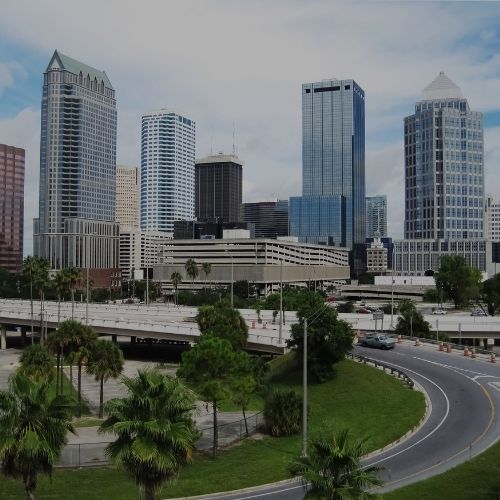What are the Statistics of Sexual Assault for Victims in School?
Sexual assault in schools is a significant and distressing issue, affecting students across the United States and worldwide. Schools, which should be safe spaces for education and development, are too often the setting for sexual violence, particularly affecting young and vulnerable populations.
Understanding the statistics of sexual assault in schools helps us acknowledge the scope of the problem, identify the populations most at risk, and recognize the broader societal implications.
National Statistics on Sexual Assault in Schools
Sexual assault and harassment is prevalent in educational settings, with a disturbing number of students reporting experiences of abuse. According to multiple reports and studies:
- Prevalence Among Students:
- The U.S. Department of Education’s Office for Civil Rights reported that during the 2017-18 school year, nearly 15,000 cases of sexual violence were reported in K-12 schools across the country. These incidents included sexual harassment, assault, and rape.
- A 2021 study from the Centers for Disease Control and Prevention (CDC) found that 1 in 5 girls and 1 in 10 boys experience sexual violence before the age of 18. Many of these instances occur in or around schools.
- According to the National Women’s Law Center (NWLC), over 56% of girls in grades 7-12 have reported experiencing sexual harassment in school, highlighting a culture of pervasive misconduct.
- College Campuses:
- Sexual assault rates are even higher in college settings. The Association of American Universities (AAU)’s 2019 survey found that 26.4% of undergraduate women and 6.8% of undergraduate men reported experiencing sexual assault through physical force, incapacitation, or both during their time in college.
- The Rape, Abuse & Incest National Network (RAINN) reports that 13% of all students in U.S. colleges experience rape or sexual assault during their college careers. This number increases significantly for students who identify as transgender or gender nonconforming.
The pervasiveness of sexual assault across all levels of education highlights the critical importance of addressing this issue head-on. With proper education, policy changes, and support systems, schools can begin to create safer environments for all students.
What is the Impact on Different Populations Regarding Sexual Assault In Schools?
Sexual assault in schools disproportionately affects certain populations, including girls, students of color, and LGBTQ+ students:
- Gender Disparities:
- Girls are significantly more likely to be victims of sexual assault in school than boys. Studies show that girls, particularly in middle and high school, face higher rates of sexual harassment and violence. According to RAINN, girls between the ages of 12 and 17 are among the most vulnerable.
- LGBTQ+ Students:
- LGBTQ+ students face heightened risks of sexual assault in schools. The 2019 Youth Risk Behavior Survey conducted by the CDC found that 24% of LGBTQ+ students reported being physically forced to have sexual intercourse compared to 5% of heterosexual students.
- Students of Color:
- Research suggests that students of color, particularly Black and Latinx students, also face increased rates of sexual assault and harassment in schools. They are less likely to report incidents due to cultural stigma, distrust of school authorities, or fear of retaliation.
These disparities further show the need for tailored support systems and policies that address the unique challenges faced by these vulnerable populations. By acknowledging and confronting these issues, schools can take meaningful steps to create safer environments for all students, regardless of gender, sexual orientation, or race.
The Reporting and Underreporting of Sexual Assault in Schools
Despite the alarming prevalence of sexual assault in schools, many cases go unreported:
- Underreporting: Research indicates that up to 80% of sexual assaults go unreported, especially among school-aged victims. Fear of disbelief, retaliation, or shame often prevents students from coming forward. Many students also worry that their accusations may not be taken seriously by school administrators, leading to a culture of silence.
- Inadequate School Responses: A 2021 report from the National Sexual Violence Resource Center (NSVRC) found that schools often lack adequate training and resources to properly handle sexual assault reports. Many students reported dissatisfaction with their school’s handling of their cases, which further discourages others from coming forward.
To combat this, schools must implement stronger protocols and provide proper training to ensure that victims receive the necessary care they require and that cases are handled with seriousness and sensitivity. By fostering a supportive environment, more students may feel empowered to report incidents, helping to break the cycle of underreporting.
What Are The Legal and Educational Responses to Sexual Assault in Schools?
Schools have a legal obligation to address sexual violence under Title IX, a federal law that prohibits discrimination based on sex in education programs or activities that receive federal funding. Title IX mandates that schools must respond promptly and effectively to sexual harassment and assault cases, yet enforcement and compliance remain inconsistent across the country.
Over the past few years, there have been several significant updates to Title IX regulations, which have sparked ongoing debate about how educational institutions handle sexual assault cases. These changes have focused on balancing the rights of both the victims and the accused, leading to differing views on how these updates impact the reporting and resolution of sexual misconduct allegations. Some critics argue that these shifts may discourage victims from coming forward, while others believe that ensuring a fair process for all parties involved is critical.
Looking ahead, further revisions are expected, with a focus on strengthening protections for victims and ensuring that schools maintain robust systems to address sexual assault cases effectively. These changes underscore the importance of how evolving Title IX policies impact students’ rights in cases of sexual violence.
How RTRLAW Can Help Survivors of Sexual Assault in Schools
If you or a loved one has experienced sexual assault in a school setting, you deserve justice, protection, and support. Sexual assault is not only a violation of your rights but also a deeply traumatic event that can have lasting emotional, physical, and psychological effects. At RTRLAW, we understand the sensitive nature of these cases and are committed to providing compassionate, aggressive legal representation for victims.
Our experienced attorneys can assist in determining whether :
- A lawsuit against the school or facility where the incident occurred is warranted
- Compensation may be available for you due to emotional and/or physical trauma
- Navigate the potential claim to ensure the school is held accountable for its actions or inactions
- Provide support and guidance throughout the legal process
We know how challenging it can be to come forward and pursue justice, but you don’t have to do it alone. Contact RTRLAW today for a free and confidential consultation. We are here to listen to you, support you, and fight for your rights.
RTRLAW Calls for the Need for Increased Awareness and Action!
The statistics surrounding sexual assault in schools are a sobering reminder of the urgent need for stronger protections and support for victims. With 1 in 5 girls and 1 in 10 boys experiencing sexual violence before the age of 18, it is clear that more needs to be done to address this pervasive issue. Schools must improve reporting mechanisms, provide better support for victims, and foster a culture that prioritizes safety and respect for all students.
Parents, educators, and policymakers must work together to ensure that schools are safe environments for learning and growth, free from the threat of sexual violence. If you or someone you know has been a victim of sexual assault in a school setting, it is important to seek legal counsel to protect your rights and explore options for justice.
For more information or to report a case of sexual assault in schools, organizations like RAINN and NSVRC offer resources and support. Additionally, RTRLAW is here to help you seek the justice and compensation you deserve—contact us today to take the first step toward holding perpetrators and complacent institutions accountable.


 CALL US NOW
CALL US NOW TEXT US NOW
TEXT US NOW



























